|
|
This newsletter is a summary of recent ESO Science Announcement items. Follow the links or visit ESO Science Announcements to read more.
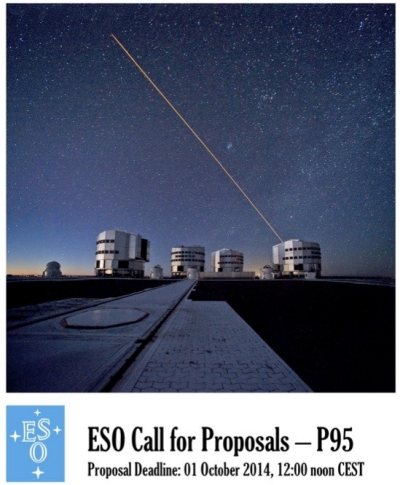
|
28 Aug 2014: The Call for Proposals for observations at ESO telescopes during Period 95 (1 April - 30 September 2015) has been released. Please consult the Call for Proposals document for the main news items and policies related to applying for time on ESO telescopes. All technical information about the offered instruments and facilities is contained on ESO webpages that are linked from the Call. The deadline for proposals is 12:00 CEST 01 October 2014.
|
|
| Read more
|
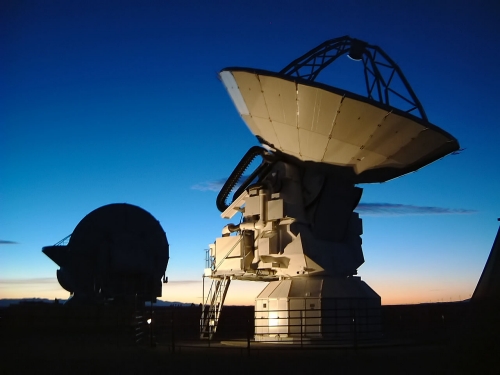
|
28 Aug 2014: ALMA Early Science observations, Cycle 1 and Cycle 2, will be interrupted, as foreseen, from the beginning of September until end of November. Several antennas will be moved to more distant stations to enable tests on baselines of 10km. Cycle 1 and 2 observing will resume in December.
|
|
| Read more
|
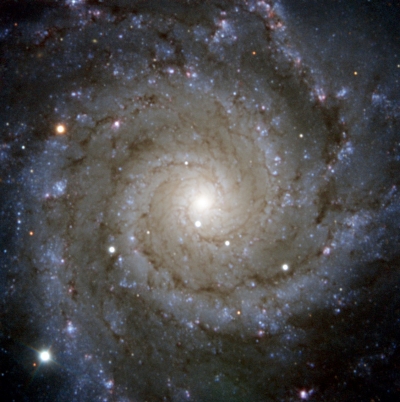
|
27 Aug 2014: The Public ESO Spectroscopic Survey of Transient Objects (PESSTO) provides high-quality, time series optical and near-infrared spectroscopy of optical transients covering a broad range of luminosity, host metallicity and explosion mechanisms. The transient objects that PESSTO selects for full spectroscopic follow-up are now immediately and publicly announced on the survey web page.
|
|
| Read more
|
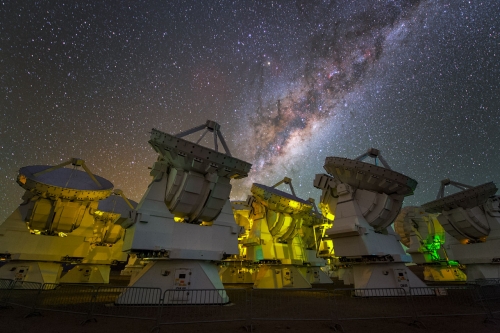
|
27 Aug 2014: The ESO Telescope Bibliography (telbib) now also provides active links from ALMA papers to the corresponding data in the archive. This feature is available for all ALMA programmes, except for science verification data. A similar functionality has been deployed for papers that use data from the VLT.
|
|
| Read more
|
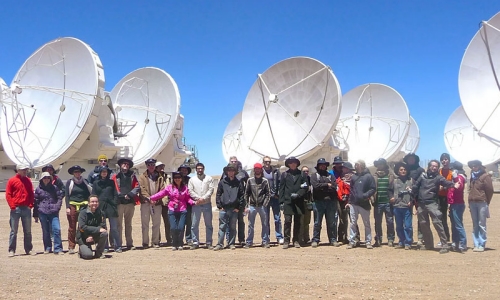
|
20 Aug 2014: ESO has a prominent fellowship programme in both Garching (Germany) and Santiago (Chile), with a yearly application deadline (15 October). The goal of these fellowships is to offer outstanding early-career scientists the opportunity to further develop their independent research programmes in an exciting scientific environment with close contact to the activities and staff at ESO.
|
|
| Read more
|

|
12 Aug 2014: ESO Workshop, Vitacura, Santiago, Chile, 13тАУ17 April 2015
Satellite galaxies, streams and the star cluster тАУ dwarf galaxy interface are inter-related. Galactic satellites and streams should be regarded together тАУ satellites result from low-mass substructures while tidal streams trace the disruption of these substructures by the host's gravitational potential. Both contribute to the assembly of the host galaxy and provide a unique opportunity to test and improve our understanding of structure formation at small and large scales. This workshop aims to bring together experts from both fields to explore the bigger picture.
|
|
| Read more
|

|
31 Jul 2014: ESO тАУ ESA Workshop, ESO Vitacura, Santiago, Chile, 2тАУ5 March 2015
Exploration of the Solar System and subsequent discoveries are made with planetary missions and ground-based observatories. These two means are complementary and are sometimes strategically linked, as in the case of the Deep Impact mission. During this workshop, the synergies between these two paths will be explored, with the aim to foster collaboration between both communities by sharing scientific and technical knowledge, needs, requirements, and techniques. The workshop will take advantage of the venue to showcase the current and future capabilities of ALMA for planetary science, and thereby encourage planetary scientists to use this facility.
|
|
| Read more
|
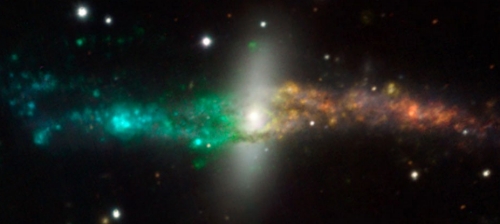
|
29 Jul 2014: MUSE raw data from the first two commissioning runs at VLT UT4 in February and April-May 2014 have now been released. Selected astronomical targets were observed to demonstrate the capabilities of the instrument and optimize observing strategies and pipeline reduction.
|
|
| Read more
|
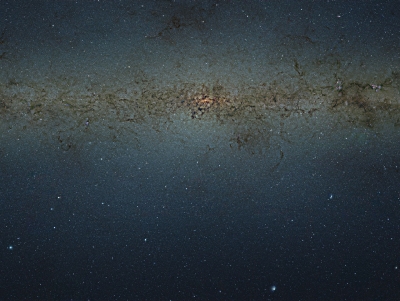
|
17 Jul 2014: The Public Survey VISTA Variables in the Via Lactea (VVV) is a wide area (562 square degree), near-infrared, multi-epoch imaging survey of the Bulge and part of the Disk of the Milky Way. The initial survey in Z, Y, J, H and Ks is followed by extensive multi-epoch Ks-band observations. VVV photometric catalogues have now been released and are publicly available for query.
|
|
| Read more
|
Upcoming ESO or ESO-Related Workshops
- RASPUTIN: Resolved And unresolved Stellar PopUlaTIoNs
ESO Headquarters, Garching, Germany, 13тАУ17 October 2014The study of stellar populations is one of the most relevant diagnostics to constrain galaxy formation and evolution. Quantitative analyses of the stellar content of galaxies pave the way to 'convert' starlight into physical quantities like stellar masses, chemical abundances and star formation rates, and to trace the evolution and chemical enrichment history of galaxies.
The main goal of this workshop is to share observations, models, techniques and recent results on galaxy evolution. Particular emphasis will be given to the current limitations affecting the intrinsic degeneracy of the multi-dimensional parameter space and to possible solutions to build a more unified and coherent picture of galaxy evolution.The impact of the E-ELT and its first generation of instruments on studies of resolved and unresolved stellar populations will also be discussed. More details are available here or by email. The registration and abstract deadline are 12 September 2014.
- HIRES 2014: Astronomy at High Angular Resolution тАУ A Cross-disciplinary Approach
ESO Headquarters, Garching, Germany, 24тАУ28 November 2014Recent years have seen a huge development in high-resolution techniques such as direct methods (e.g., adaptive optics, lucky imaging), interferometry (including speckle imaging and spectro-astrometry) and reconstruction methods (astrotomography). This workshop aims to bring together the different communities working in these fields increasing the synergies among them. A variety of imaging and spectroscopic techniques will be covered, applied to a range of astronomical targets from planets, stellar discs, stellar surfaces, binary stars and active galactic nuclei. Current and future instrumentation for high angular resolution will also be featured. Sessions will be organised by science topic, with a review followed by observational results and technical talks on the methods. There will be ample time for contributed talks and discussions, and space for posters.
More detailed information is available on the workshop webpage or by e-mail. The abstract submission deadline is 22 August and the registration deadline 24 October 2014.
- Revolution in Astronomy with ALMA тАУ The 3rd Year тАУ
Tokyo International Forum, Tokyo, Japan, 8тАУ11 December 2014The Atacama Large Millimeter/submillimeter Array (ALMA) has been producing a growing number of impressive and transformational science results as the most powerful mm/submm interferometer in the world. Held in central Tokyo, the aim of this workshop is to highlight the science results from ALMA obtained during the first three years of science operations. The science topics include all fields of astronomy: cosmology and galaxies in the distant Universe; nearby galaxies and the Galactic Centre; the interstellar medium and star formation in our own Galaxy; astrochemistry, circumstellar disks, exoplanets and the Solar System; stellar evolution and solar physics; and fundamental physics.
This four day workshop will feature invited and contributed talks, poster sessions and an optional full day excursion. Young researchers and students are particularly encouraged to attend the meeting. The final registration deadline is 15 October 2014 and more details are available from the conference website.
|
|
|
|
|
|
|
|